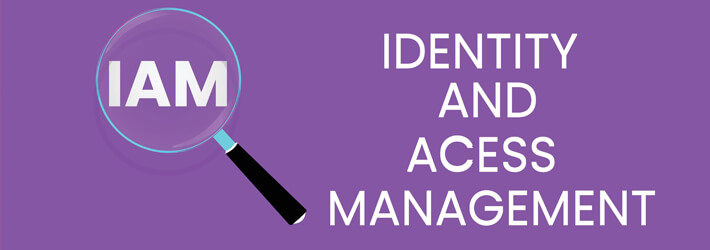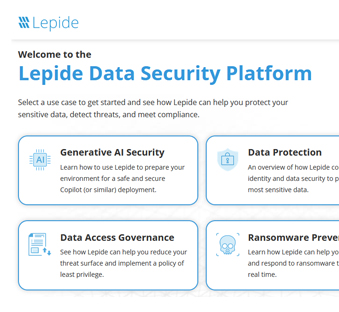
Identity and Access Management (IAM), as you might have guessed, is the means by which organizations manage user identities and access privileges. Microsoft Active Directory (AD), a widely adopted directory service, plays a central role in IAM by providing a centralized platform for managing user identities, group memberships, and access permissions. This article aims to shed light on what Microsoft Active Directory is, how it operates, and its significance in the context of IAM.
What Is Microsoft Active Directory?
Active Directory is a directory service for Windows-based systems that offers centralized authentication and authorization services. It enables organizations to manage user accounts, groups, and access permissions, providing a single point of authentication for users within the network. AD functions as a hierarchical database, storing information about users, computers, and other network objects. Administrators can define policies and access control lists (ACLs) to determine who can access which resources within the network, ensuring secure and controlled access to resources.
How Does Microsoft Active Directory Work?
AD uses the Lightweight Directory Access Protocol (LDAP) to organize network resources into a hierarchical structure known as a forest, comprising multiple domains. Each domain, representing an administrative unit, holds users, groups, and computers. Organizational units (OUs) further arrange objects into logical groups within domains, enabling targeted application of group policies and access control. Group policies, defined within AD, dictate the behavior of computers and users, encompassing user permissions, network configurations, and software management.
Is Active Directory Just for Large Companies?
AD caters to organizations of all sizes. It offers scalability to handle numerous users and resources, while its flexibility allows customization for smaller organizations. For small businesses, AD serves as a centralized hub for managing user accounts and permissions, enhancing security and compliance. AD’s features like password policies, activity monitoring, and audit reports ensure data protection. Mid-size and large organizations benefit from AD’s ability to manage extensive user identities and access permissions. AD seamlessly integrates with other Microsoft products, boosting security, compliance, and productivity.
How Does AD Relate to Identity and Access Management?
AD is a central component of IAM as it allows administrators to control resource access, authenticate users, and enforce compliance requirements. AD integrates with other IAM tools like Single Sign-On (SSO) and Identity Governance and Administration (IGA) to provide a cohesive access management system. SSO enables users to log in once and access multiple resources, while IGA helps administrators manage identities across different systems. AD ensures the security and integrity of access by enforcing password policies, implementing multi-factor authentication, and monitoring user activity.
What is the difference between IAM and Active Directory?
| Criteria | Active Directory | IAM |
|---|---|---|
| Scope | Active Directory is a system that mainly controls users, devices, and resources within a local or company network in Windows settings. The emphasis is on the IT infrastructure of the company that is based on Windows servers and endpoints. | IAM is a comprehensive set of processes and technologies aimed at digital identity management, and it also takes care of the security of those identities as well as their access to the resources. IAM is a solution that deals with identity and access management across various platforms, such as cloud services, on-premise systems, and SaaS applications. |
| Function | Active Directory operates as a directory service that stores the information of user accounts, computers, and groups and also performs user authentication and authorization for devices that belong to the Windows domain. | IAM automates user onboarding, offboarding, and role changes automation for all connected systems. It performs user access provisioning, deprovisioning, and management for the organizational applications irrespective of platform or location. |
| Access Control | Active Directory relies on group-based access, where users are made members of the groups and then given the necessary rights. The access control system in the active directory is quite fixed and manual in nature. | IAM gives more detailed and flexible access management by utilizing techniques such as Role-Based (RBAC) and Attribute- Based Access Control, which allow organizations to set policies for access based on roles, departments. |
| Compliance & Auditing | Active Directory offers activity logging within the AD environment, which can be instrumental in observing changes or security incidents associated with Windows resources. | IAM Offers comprehensive audits from all connected systems and applications and thus, it has sound reporting features that can be used for meeting regulatory compliance and accessing reviews. |
| Single Sign-On (SSO) | Active Directory can enable SSO, however, the SSO is mainly limited to the Microsoft ecosystem, and for other platforms, additional tools or extensions are needed to achieve it. | IAM is designed for cross-platform SSO, it can be used for quick and safe access to cloud, SaaS, and legacy systems, through the use of a single credential. |
| Authentication Methods | Single sign-on combined with password usage is the main authentication method, however, Active Directory also supports Kerberos authentication and smart card technologies. | IAM supports advanced authentication factors like multi-factor authentication(MFA), adaptive(contextual) authentication, and biometrics which significantly improves security for both cloud and on-premises applications. |
| Integration | AD often needs to be connected with other applications to extend its functionalities in the cloud or modern applications; the integration can sometimes be limited or complicated. | The purpose of IAM is to provide a centralized and aggregated control by being linked to directories such as AD, LDAP, Azure, etc., so that there is a single platform for organizational environment identity and access control. |
The Role of IAM in Cybersecurity
IAM is a broader concept encompassing policies, processes, and technologies that facilitate the management of digital identities. It focuses on ensuring that the right individuals have the appropriate access to resources within an organization. IAM solutions help mitigate security risks, streamline user onboarding/offboarding, and enforce compliance with regulatory requirements.
IAM Components and Functions
Identity Provisioning: Automates the creation, modification, and deletion of user accounts.
Authentication and Authorization: Verifies user identities and grants appropriate access permissions.
Single Sign-On (SSO): Enables users to log in once and access multiple applications seamlessly.
Multi-Factor Authentication (MFA): Enhances security by requiring multiple forms of verification.
Enhancing Security with AD and IAM Integration
Integrating Active Directory with IAM solutions creates a robust security framework. IAM can build on AD’s foundation by adding additional layers of security, such as advanced authentication mechanisms and granular access controls. This integration ensures that only authorized users with the right permissions can access sensitive data, reducing the risk of unauthorized access.
Streamlining User Lifecycle Management – The combination of AD and IAM simplifies user lifecycle management. IAM systems can automate the onboarding and offboarding processes, ensuring that users have the right access at the right time. This not only enhances efficiency but also reduces the risk associated with lingering access to former employees.
Improving Compliance and Auditing – IAM solutions provide robust audit trails, allowing organizations to monitor and track user activities. This is crucial for compliance with regulatory requirements and internal policies. By integrating IAM with AD, administrators can generate detailed reports on user access, helping to demonstrate compliance during audits.
Active Directory Alternatives
AD has become the most comprehensive and widely adopted directory service. However, there are other directory services that offer similar functionality, which include;
OpenLDAP: Open-source directory service which free to use and customizable.
Novell eDirectory: Similar functionality to AD, and supports multiple platforms, including Windows, Linux, and UNIX.
Oracle Directory Server: Offers centralized management of user accounts and access permissions, and integrates with other Oracle products.
IBM Security Directory Server: Offers centralized management of user accounts and access permissions. It is highly scalable an thus beneficial for large organizations with complex IT infrastructures.
How Lepide Helps Implement IAM in Active Directory
The Lepide Data Security platform is a comprehensive Active Directory management and security solution. The platform helps organizations detect and respond to threats to sensitive data, govern access, and gain visibility over sensitive data. It simplifies the process of keeping Active Directory clean and provides automated real-time alerts for security concerns, such as high volumes of file copy events. The platform uses machine learning algorithms to detect anomalies, and provides intuitive audit reports that can be used to demonstrate compliance efforts.
If you’d like to see how the Lepide Data Security Platform can help to secure your Active Directory environment, schedule a demo with one of our engineers.


